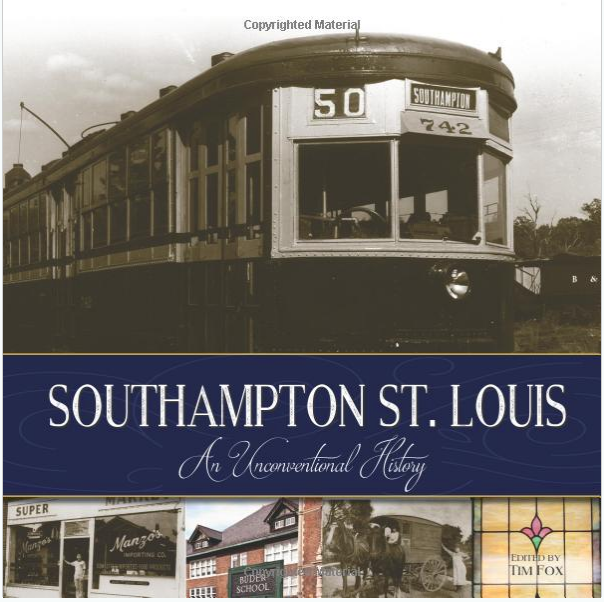- Home
- About
- Neighborhood Overview
- Southampton History Book

The Idea
Let's imagine a group sitting around making conversational connections as folks tend to do. The talk turns to "I remember here in Southampton..." and the stories start. Some true. Others perhaps tall tales. The fun conversations continued across the years until someone said, "We should write a book about our neighborhood…"
And so they did. It was not just a labor of love for Southampton--it became an ambitious project that would consume any spare time that a handful of Southampton neighbors and former residents would have in the months and years ahead. Ever so slowly the photos and stories were collected and sorted. A treasure trove of historic photos from Southampton's own Hope Evangelical Lutheran Church were made available to the group and became the main source for the large number (over 200) of photos that made the final draft. After a great deal of hard work, five authors emerged who fleshed out the research and created a charming set of articles about the neighborhood’s history.
In the words of Tim Fox, one of the five authors and the book's editor,
Southampton's history has followed a familiar path. Like other early twentieth-century streetcar suburbs, it as persevered through two world wars, the Great Depression, and the turbulent 1960s because of the commitment of those who have called it home. What's unconventional is how that story is told here. Rather than the work of one scholar proving a well-crafted thesis, this book is the product of a group of non-scholars whose only thesis is "Southampton is a great place to live, work, and play." But while the story of how it got that way relies more on memories than libraries, we think it's a useful tool for understanding Southampton--and we hope you'll find a surprise or two along the way.
So many pictures...so many stories. By any measurement, the history of Southampton was going to be big and unconventional. It would not be the more common, small size history. Instead the photos and stories piled up higher and higher.
The Dream is Realized
The fundraising campaign for the History Book was an amazing success in a short period of time. Our generous neighbors provided the support needed to reach the goal. With the help of Reedy Press, a local St Louis publishing house, the book debuted on September 1, 2017. The project has been a great success and the first run has been almost sold out! Only a handful of copies remain on Amazon.
From The Book
The Southampton Streetcar and Pranks
by Dennis McCarthy
The earliest streetcars came with two conductors--one in the front driving, and the other in the back, letting passengers off. Then he stepped on a button on the floor to cause a bell to clang, telling the driver it was okay to start up again.That rear conductor was eventually replaced by mirrors. Unfortunately for the driver, the bell wasn't replaced, and kids coming home from school would go to the back of the streetcar and pound their feet mercilessly on that button making the trolley"CLANG, CLANG,CLANG" all the way home.
Sometimes, on windless summer days, kids would space kitchen matches about a foot apart on the tracks and as the streetcars hit the matches they would "POP POP, POP" like a submachine gun. On other days, on the downhill side of the intersection of Devonshire and Brannon, axle grease was spread onto the tracks to see the trolley skid through the intersection. And often when the streetcar stopped, it couldn't go again because a prankster had pulled the trolley wire off the overhead wires.
The early streetcars had cane seats and little coal stoves in the front to keep the conductor warm. Fares were a nickel for children under twelve and ten cents for others. Newer, quieter, and more streamlined streetcars came later, but they still made noise.
When the trolleys finally stopped running, the Southampton residents awoke several times a night for a while, listening for sounds that never came again. But one sound remained for a while---The "CLOP CLOP" of the horse and the sound of the steel-covered wheels on Gorman's newspaper wagon crossing the tracks.Then asphalt was laid over the tracks.
Recognizing the Authors and the Donors
Without the tireless effort of five writers, this book would not exist. Hats off to Tim Fox, Matt Kellner, Dennis McCarthy, Dennis Polley and Linda Stewart who led the community of neighbors and former residents with enthusiasm and energy. Neighbors and organizations provided financial support and articles...thanks to all!
 Southampton Neighborhood Association
Southampton Neighborhood Association